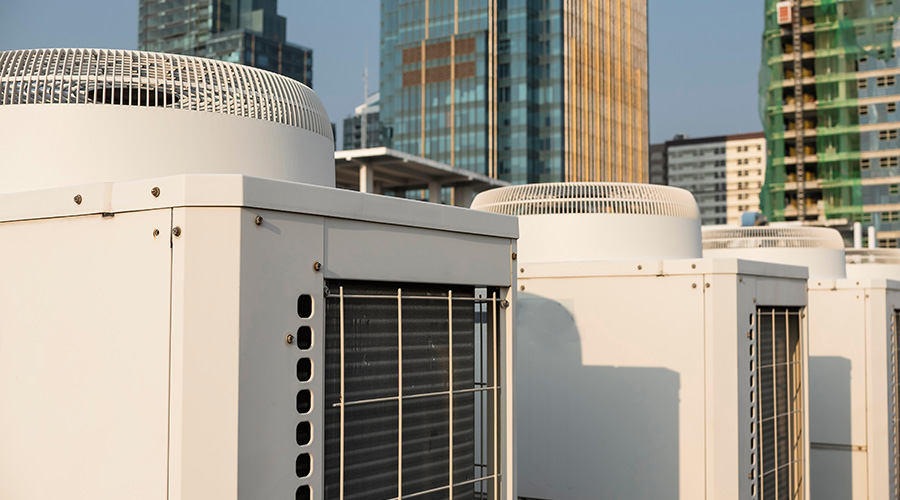Visual Cues Can Help Janitorial Staff, Bathroom Occupants Transition to Green
From a users' perspective, the most important thing about the bathroom is whether it is clean. But when beginning a green cleaning program, a corresponding bit of occupant education may be necessary. "Advertising has done a good job of convincing us that Ôclean' smells like lemon, pine oil, or whatever, when clean actually smells like nothing," says Ashkin.
Most consumers and cleaning people might say they want a bathroom to have a pleasant smell. In addition, some may also like to see something like blue dye in the toilet. Re-education involves replacing these visual and olfactory cues with something else.
For example, the bathroom can post a checklist that shows the last time the bathroom was cleaned. Occupants can be given information on recycled products and how they help the environment. Janitorial staff can put signs on mirrors that educate occupants about green cleaning chemicals, and newsletters can report regularly on what is being done in the building and why it is good for the environment, Ashkin says.
In Healthy Schools' five-step program, equipment is the second step, because using new technologies — such as microfibers, HEPA filters and scrubbers that clean with activated ion water — goes hand-in-hand with using fewer toxic chemicals as well as less product. Proper use and cleaning of microfiber cloths is important to ensure that germs are not spread. Changing the chemical management system to one that automatically mixes and dilutes chemicals is part of the process.
Janitronics, a green-cleaning company, began with Green Seal-approved chemicals and a management system to reduce use. According to Walter Shaw, senior vice president of operations, the next step was to replace vacuum cleaners, as they broke down, with HEPA-filter vacuums that met the Carpet and Rug Institute standard for vacuums — operating at less than 70 decibels and with reduced discharge of particulates. Next was adding microfiber flat mat mops and dual-bucket chambers so the solution stays cleaner longer, as the waste water fills a separate chamber.
Some decisions led to complaints from the janitorial staff. The staff was not used to flat mopping, and they had to be trained in the new technology. Many of the new HEPA vacuums are backpack models that require the employee to strap the machine to his or her back. Although this vacuum is faster and does just as good a job cleaning, the employees perceived them to be a burden. "The biggest challenge is to convert the work force to a green concept," Shaw says. "We are working with our employees. Eventually they come around." He says he does use some upright HEPA vacuums that are easier for women, and a new manufacturer will soon have a nine-pound vacuum cleaner that, if it is put on properly, rides on the shoulders.
Cost Still a Factor for Some
Shaw also says that while green advocates often say green cleaning doesn't cost more, that is not true for all aspects. "It is not as costly as 10 years ago, but, for example, a regular vacuum costs about $175 while a HEPA vacuum is going to be about $250," he says. "The same is true for floor finishes. Green Seal finishes cost about twice as much." It is more expensive to run a green cleaning program, he says, but a little less expensive to do it in stages. The impetus for his company to go green was the growing popularity of the LEED concept among building tenants and their desire for a green program.
Bill Garland, a consultant with Daniel Associates, says that while everybody wants to jump on the green bandwagon, the economy has slowed the introduction of new programs. "Green cleaning properly implemented will cost less money," says Garland, "but part of the challenge is that it takes a fair amount of effort — chemicals, equipment, technology, training, and a whole host of other things — to get a program going. Once you get the program going you will see that it lowers costs."
Garland says he agrees certain capital costs are necessary to create a green cleaning program. Such costs include new scrubbers, hands-free washroom equipment, microfiber cloths, and the like. Savings and other benefits will accrue in labor, chemical costs, fewer complaints from tenants, less staff turnover and fewer injuries, he says, not to mention benefits for the environment. The effort and costs of implementing green cleaning should be followed up with education and training to convince people the program is worth it.
Gauging Progress
Despite the continued buzz about green cleaning, a relatively small number of companies have made a complete transition to the new approach, says Garland. He estimates that only two percent of the market is fully green.
Bishop says there has been no broad-based survey on the subject. Ten states have passed green cleaning requirements for schools, and some states are passing procurement and green cleaning requirements for government buildings. A total of 17 states currently has some requirement for green cleaning.
He says the most effective way to do a robust green-cleaning program is to do it all at once, but that even if a building is doing it in pieces, progress is being made. With a fully operational program, waste haulers and distributors become part of the team. The biggest obstacle to change is in getting people to make a fundamental shift in their thinking, he says, and to understand why they need to do things differently.
Ashkin says that, when facility managers think about green cleaning, they should follow LEED-EBOM requirements as a road map, whether they are going for certification or not. Using the standard makes it easier for the team, he says, because it has requirements in areas like chemicals, paper, equipment, and training and communication.
Bishop says he encourages facility managers to support ongoing professional development among the custodial staff. "These standards add a level of professionalism to the cleaning industry," he says. "We have to get away from the idea that you can put a broom in anyone's hands and he can be a janitor. It takes real skills and training."
Maryellen Lo Bosco is a freelance writer who lives in Asheville, N.C.

Related Topics:













